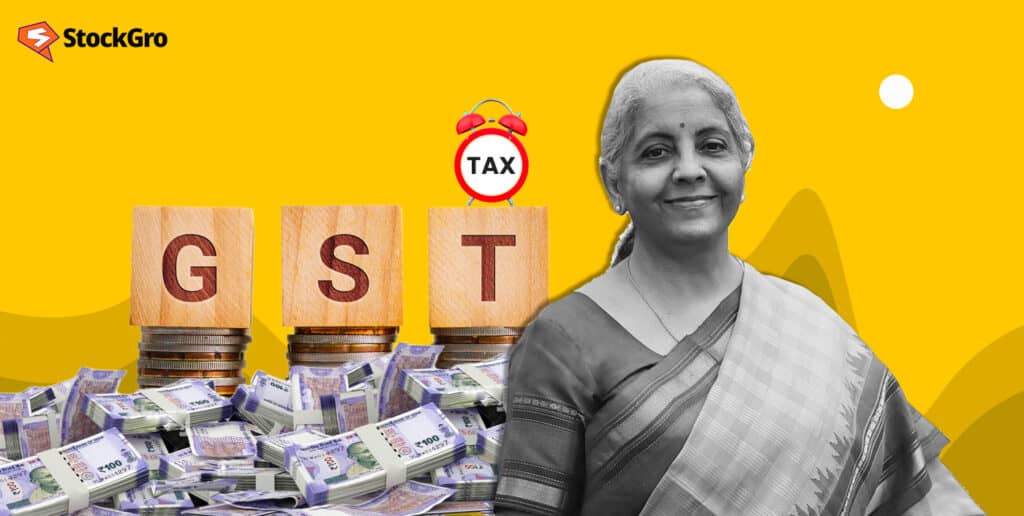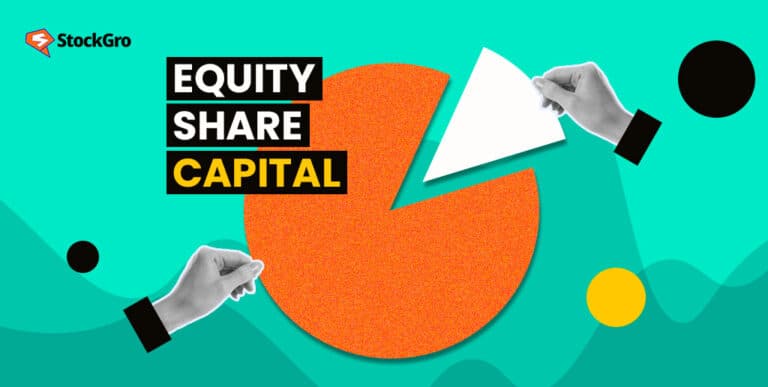
On Tuesday, 11th July, the GST (Goods and Services Tax) Council approved several proposals. It has been making waves with its latest decisions, and we’re here to break it down for you. From changes in food taxes at cinemas to the impact on gaming and casino firms, let’s dive into the details.
The introduction of GST has significantly boosted revenue for the Centre, with gross GST collections reaching an impressive Rs 1.44 lakh crore in June. This marks the second highest collection after April’s record-breaking Rs 1.68 lakh crore, showcasing the robust revenue growth of the GST system.
The monthly GST revenue has consistently exceeded Rs 1.4 lakh crore for 15 consecutive months. The gross revenue has crossed the Rs 1.6 lakh crore mark four times since the inception of GST. Every July 1, India celebrates GST Day for the successful implementation of the GST regime in the country.
Finance Minister Nirmala Sitharaman highlighted the potential of GST. Stating that monthly revenue collections of Rs 1.40 lakh crore are now the “rough bottom line.”
Before GST, tax buoyancy stood at 0.72%, with state revenue growth at 8.3% and nominal GDP growth at 11.5%. Since GST’s introduction, tax buoyancy has soared to 1.22%, with growth rates of 12.3% for revenue and 9.8% for nominal GDP.
You may also like: The best banks in India: Leading the way in finance
Tax structure and impact
Under the GST regime, a four-rate structure is in place, with essential items taxed at a low rate of 5%, while cars face the highest rate of 28%. The other tax slabs are set at 12% and 18%.
Prior to GST, the cumulative effect of VAT, excise, CST, and cascading taxes resulted in consumers paying an average of 31% in taxes.
From July 1, 2017, to June 1, 2022, the number of taxpayers in India more than doubled, skyrocketing from 66.25 lakh to an impressive 1.38 crore.
| GST: Achievement in numbers (₹) (Figures as of May 31, 2022) |
| Registered taxpayers: 1.37 crore |
| Total returns filed: 89.11 crore |
| E-way bill generated: 272.61 crore |
| Payment through the portal: 45.57 crore |
| Total payment transactions: 23.97 crore |
| Highest GST collection till date: Rs 1.68 lakh crore (April 2022) |
| Registered taxpayers: 1.38 crore (as of June 1, 2022 |
Let’s delve into the recent updates from the 50th GST Council meeting.
Lights, Camera, (Lower) GST!
Clarification on cinema food tax: The GST Council announced that the tax on food served in cinema halls would be 5% instead of 18%. But don’t expect a cheaper movie snack experience just yet!
Before the recent decision, there was confusion about how much GST should be levied on food served at cinemas. The GST Council clarified that pre-booked food served in cinema halls would be taxed at 5% instead of 18%.
Before this clarification, cinema halls were charging 5% GST on food, considering it similar to restaurants. So, no price drop for your popcorn, pizza, or burger.
Some relief for PVR, Inox Ltd: Multiplex operators can now breathe a little easier. As food items and beverages consumed at cinema halls and pre-booked snacks will be taxed at 5%.
F&B(Food & Beverages) sales play a significant role in the revenue of multiplexes, accounting for up to 35% of their earnings. This move brings relief to the struggling cinema exhibition industry.
The average F&B spend at cinema halls currently accounts for around 50-52% of the ticket price. The aim is to increase this percentage and bring it in line with Western countries where F&B contributes as much as 70-75% to cinema revenue.
Low-priced delights: Snacks and Threads
- Uncooked snack pellets and fish-soluble paste now have a reduced GST rate of 5%, down from the previous 18%.
- Imitation zari threads and yarn will also see a decrease in GST from 12% to 5%.
Costly gambles: Online gaming and casinos
The GST Council imposed the highest slab rate of 28% on online gaming, horse racing, and casinos. This decision is expected to impact gaming volumes, slow down foreign investment, and pose challenges to gaming companies, especially startups.
Delta Corp, known for its involvement in the casino and gaming industry, experienced its worst fall ever. The stock plummeted by a staggering 29% to a low of ₹175.65, leaving sellers in a frenzy. After the tumultuous ride, it managed to close at ₹190 on the NSE, down 23% compared to the previous day’s closing.
Online gaming company Nazara Technologies, backed by Singapore’s GIC and Rakesh Jhunjhunwala’s firm, faced its own challenges. The stock took a plunge of 14.2%, causing some anxious moments for investors. However, it managed to regain and recover most of its losses. Nazara’s stock ended at ₹683 apiece on the NSE, down 3.33% from the previous close.
Also Read: IOC rights issue 2023: All you need to know about Rights Issue of shares
So, while your cinema snacks may see a slight tax relief, online gaming and casinos are feeling the heat.
MUVs and SUVs face cess hike
The Council raised the cess rate by 2 percentage points on Sports Utility Vehicles (SUVs) and Multi-Utility Vehicles (MUVs), taking it from 20% to 22%..
The news had a mixed impact on the market, with the Nifty Auto index experiencing minor cuts of 0.13%. Hero MotoCorp, Tata Motors, and M&M faced a dip, while Eicher Motors, Balkrishna Industries, and Ashok Leyland managed to gain ground.
The revision in the tax structure makes select SUVs one of the highest taxed products in the country, with a staggering 50% tax rate (22% cess + 28% GST). This increase adds to the burden on SUV buyers, making their dream rides a bit costlier.
Some of the popular MPVs sold in India that could come under the new tax revision include
| Current MPV Models in India | |
| Make | Model |
| BYD | E6 |
| KIA | CARENS |
| MAHINDRA | MARAZZO |
| MARUTI SUZUKI | EECO | ERTIGA | INVICTO | XL6 |
| RENAULT | TRIBER |
| TOYOTA | INNOVA | VELLFIRE |
Impact on auto industry
While the hike in GST on UVs has made headlines, industry experts predict that the overall impact on auto sales will be minimal. Demand for MUVs constitutes less than 12% of auto sales, which explains the limited effect on the sector.
Approximately 10 MPVs from six carmakers could see a slight increase in prices, accounting for a small portion of the passenger vehicle market.
The GST revision based on technical specifications for utility vehicles may contradict real-world demand factors. SUVs are not solely driven by the premium factor but also by factors like accommodating larger families, navigating poor roads, and tackling waterlogged areas.
It’s interesting to note that a vehicle like the Maruti Suzuki Ertiga, which is not a luxury vehicle, may attract more GST than luxury products like the Mini Cooper or Mercedes-Benz GLA.
| Body Style Trend | ||||
| Body Type | 2022 | YTD June -2023 | Market share in 2022 (in %) | Market Share in YTD June 2023 (in %) |
| SUV | 1,603,362 | 928,336 | 42.00% | 46.00% |
| Hatchback | 1,326,566 | 670,385 | 34.70% | 33.20% |
| MPV | 457,337 | 225,892 | 12.00% | 11.20% |
| Sedan | 433,116 | 194,671 | 11.30% | 9.60% |
| Others* | 270 | 95 | 0.00% | 0.00% |
| Grand Total | 3,820,651 | 2,019,379 | 100 | 100 |
Tax breaks: Cancer drug and special medical purposes
In a move that brings relief to many, the GST Council has decided to exempt GST on the import of the cancer drug Dinutuximab and Food for Special Medical Purposes (FSMP) used in the treatment of rare diseases.
Previously, the cancer drug was subject to a 12% integrated GST, but now it will be exempted.
GST impact on India’s GDP
The recent surge in GST collections has been hailed as a positive sign of economic recovery and an indicator of the country’s tax performance. However, when we compare the rise in GST collections to India’s Gross Domestic Product (GDP), the impact may not be as significant as expected.
India’s GDP was steadily rising until FY2017, reaching a high of 8.26%. But then, economic growth took a downward turn. The fall in GDP cannot be solely attributed to the implementation of GST. Another unexpected move by the government, demonetisation in 2016, also played a role.
These back-to-back reforms hit the economy, resulting in a significant drop in GDP growth, with figures as low as 3.74% by FY20. The following two years were marred by the COVID-19 pandemic, impacting both GST collections and GDP. The economy hit a slump.
Also Read: A closer look at India’s latest Q4 GDP data: Key takeaways
However, with the gradual resumption of economic activities, growth gained momentum, and India is now on track to become the fastest-growing major economy.
What do you think of the recent changes? How much will it impact your wallet? Let us know in the comments!

